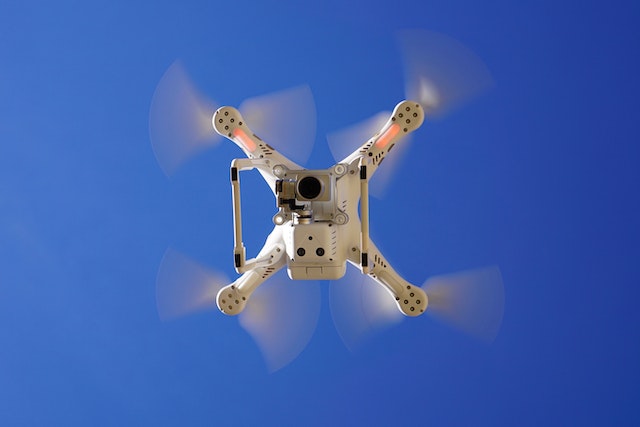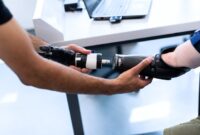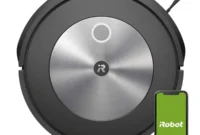Like any other mechanical device, drones are susceptible to technical issues, with motor failure being a common problem. Dealing with drone motor failure requires a good understanding of the causes, preventive measures, troubleshooting techniques, and repair options. In this article, we will explore the different aspects of drone motor failure and provide you with valuable insights on how to address this issue effectively.

Introduction
Drone motor failure refers to the malfunctioning or complete breakdown of one or more motors in a drone. The motor is a critical component that drives the propellers, allowing the drone to take off, fly, and perform various maneuvers. When a motor fails, it can significantly impact the drone’s performance and even lead to a crash. Therefore, it is crucial for drone enthusiasts and professionals to be familiar with the causes, prevention methods, troubleshooting techniques, and repair options related to motor failure.
Understanding Drone Motor Failure
Causes of motor failure
Several factors can contribute to drone motor failure. One common cause is overuse or excessive strain on the motor. Continuous flying, especially in harsh conditions or with heavy payloads, can lead to motor overheating and subsequent failure. Additionally, poor maintenance practices, such as neglecting regular cleaning and lubrication, can result in motor issues. Electrical problems, such as short circuits or damaged wiring, can also cause motor failure.
There are several causes that can lead to drone motor failure. Understanding these causes can help drone owners take preventive measures and minimize the risk of motor failure. Here are some common causes of motor failure:
- Overuse and excessive strain: Continuous and prolonged use of a drone, especially in demanding conditions or with heavy payloads, can strain the motors. This can lead to motor overheating and eventual failure. It is important to give the motors sufficient rest and avoid pushing them beyond their recommended limits.
- Lack of maintenance: Poor maintenance practices can contribute to motor failure. Neglecting regular cleaning, lubrication, and inspection can result in the accumulation of dust, dirt, and debris, affecting the motor’s performance. Regular maintenance helps ensure that the motors are in optimal condition and can prevent premature failure.
- Electrical problems: Electrical issues such as short circuits, damaged wiring, or faulty connections can cause motor failure. These issues can disrupt the flow of electricity to the motor, resulting in improper functioning or complete failure. It is essential to inspect the electrical components of the drone regularly to identify and address any potential problems.
- Physical damage: Accidental impacts or crashes can cause physical damage to the motors. External forces can bend or break motor shafts, damage the windings, or displace internal components, leading to motor failure. Pilots should exercise caution during flights and avoid collisions to prevent motor damage.
- Environmental factors: Operating a drone in extreme weather conditions can put stress on the motors and increase the risk of failure. Flying in excessively hot or cold temperatures can affect motor performance and lead to overheating or freezing. High humidity levels can also be detrimental to motor function. It is important to consider the environmental conditions before flying and take necessary precautions.
- Manufacturing defects: In some cases, motor failure can be attributed to manufacturing defects or quality issues. Defective components or poor craftsmanship can result in early motor failure. While this is relatively rare, it is important to purchase drones from reputable manufacturers and check for any recalls or known issues with the specific model.
By being aware of these causes, drone owners can take proactive steps to prevent motor failure. Regular maintenance, proper flying practices, and environmental considerations can significantly reduce the risk of motor failure and ensure a longer lifespan for the drone.
Signs of motor failure
Recognizing the signs of motor failure is crucial for addressing the issue promptly. Some common indicators include increased noise from the motor, reduced power and efficiency, erratic behavior during flight, and vibrations or wobbling. Monitoring these signs during drone operation can help detect motor issues before they escalate.
Recognizing the signs of motor failure is crucial for addressing the issue promptly and avoiding further damage to your drone. Here are some common signs that indicate motor failure:
- Increased noise: If you notice that one or more motors are making more noise than usual during operation, it could be a sign of motor failure. Excessive or abnormal noise, such as grinding, screeching, or clicking sounds, may indicate internal damage or misalignment within the motor.
- Reduced power and efficiency: A failing motor may not provide the same level of power and thrust as before. You may notice a decrease in the drone’s overall performance, such as reduced speed, difficulty maintaining altitude, or a shorter flight time. The drone may struggle to lift off or carry its usual payload.
- Erratic behavior during flight: When a motor is failing, it can cause erratic movements or instability during flight. The drone may exhibit unexpected tilting, drifting, or difficulty maintaining a stable hover. Uneven thrust from the motors can disrupt the balance and control of the drone.
- Vibrations or wobbling: Motor failure can lead to excessive vibrations or wobbling in the drone. If you notice abnormal vibrations that affect the stability of the drone during flight, it may indicate an issue with one or more motors. Excessive vibrations can also increase the risk of other components getting damaged or loosened.
- Inconsistent motor response: When you make control inputs, such as adjusting throttle or changing direction, a failing motor may not respond consistently or may lag behind the others. This can result in imprecise and unpredictable flight behavior. Unequal thrust output from the motors can affect the drone’s maneuverability and responsiveness.
- Overheating: If a motor is experiencing internal problems, it may generate excessive heat during operation. You might feel the motor becoming unusually hot to the touch after a short period of use. Overheating can lead to further motor damage and potential failure if not addressed.
If you observe any of these signs, it is important to take immediate action. Continuing to fly the drone with a failing motor can pose safety risks and potentially cause further damage to other components. Consult the manufacturer’s guidelines, seek professional assistance, or follow troubleshooting steps to identify and address the motor failure issue effectively.
Impact of motor failure on drone performance
Motor failure can have significant consequences for drone performance. A malfunctioning motor may cause imbalance, affecting the stability and maneuverability of the drone. Reduced thrust and power output can limit the drone’s flight capabilities, leading to shorter flight times and limited payload capacity. Ignoring motor failure can result in complete loss of control and potential crashes, endangering the drone and surrounding objects.
Preventing Drone Motor Failure
Preventing motor failure is preferable to dealing with its consequences. Here are some essential preventive measures:
Regular maintenance and inspection
Routine maintenance is essential for ensuring the longevity and optimal performance of drone motors. Regularly inspect the motors for any signs of wear and tear, loose connections, or debris accumulation. Clean the motors and propellers regularly, removing any dust or dirt that may hinder their performance. Lubricate the motor bearings as per the manufacturer’s recommendations to minimize friction and prevent overheating.
Proper storage and transportation
When not in use, store your drone in a dry, clean, and secure environment. Extreme temperature variations, high humidity, or exposure to moisture can adversely affect the motors and other components. During transportation, secure the drone properly to prevent any physical damage to the motors. Utilize protective cases or bags designed for drones to safeguard against impacts or jostling.
Temperature and humidity considerations
Operating drones in extreme weather conditions can strain the motors and lead to failure. Avoid flying in excessively hot or cold temperatures, as it can cause the motors to overheat or freeze. High humidity levels can also be detrimental to motor performance. If you must fly in adverse conditions, ensure that the motors are adequately cooled or heated as per the manufacturer’s guidelines.
Troubleshooting Drone Motor Failure
In the event of motor failure, it is crucial to troubleshoot the issue to identify the underlying problem. Here are some steps to follow:
Identifying the problem
Begin by thoroughly inspecting the drone and its components. Look for any visible damage, loose connections, or signs of electrical issues. Listen for abnormal noises or vibrations that may indicate motor failure. If possible, compare the performance of the faulty motor with the functioning ones to pinpoint the problem.
Replacing faulty components
Once you have identified the problematic motor, it may be necessary to replace it or its faulty components. Check if the motor is under warranty, as this can help cover replacement costs. If you have experience with drone repairs, you can attempt to replace the motor yourself using specialized tools and following the manufacturer’s instructions. However, if you lack the necessary expertise, it is advisable to seek professional assistance.
Testing and calibration
After replacing the motor, conduct thorough testing and calibration to ensure proper functionality. Follow the manufacturer’s instructions or consult an expert to ensure accurate calibration of the motor and its corresponding electronic speed controller (ESC). This step is crucial for achieving optimal performance and stability during flight.
Repairing Drone Motor Failure
DIY repairs
For those with technical skills and experience, DIY repairs can be a viable option for addressing drone motor failure. However, it is essential to exercise caution and follow proper guidelines. Ensure that you have the necessary tools, replacement parts, and knowledge of the specific drone model. Refer to manufacturer-provided documentation, online tutorials, or user forums for guidance. DIY repairs can be cost-effective but may void the warranty if not done correctly.
Seeking professional assistance
If you lack the technical expertise or confidence to repair the drone motor yourself, it is advisable to seek professional assistance. Drone repair services or authorized service centers have trained technicians who can diagnose and address motor failure effectively. They have the necessary tools, knowledge, and access to genuine replacement parts, ensuring proper repairs without voiding warranties.
Replacement options
In some cases, repairing the motor may not be feasible or cost-effective. If the motor is severely damaged or if multiple motors have failed, it may be necessary to consider replacing the entire motor assembly or even the entire drone. Assess the overall condition of the drone, its age, and the cost of repairs versus the cost of a new drone. If replacement is the most practical option, research and select a suitable replacement model that meets your needs and budget.
Safety Measures
Dealing with drone motor failure requires adherence to safety measures to protect yourself, others, and the drone. Here are some important safety considerations:
Importance of safety precautions
Always prioritize safety when dealing with drone motor failure. Follow the manufacturer’s safety guidelines and wear appropriate personal protective equipment (PPE), such as safety goggles and gloves, when handling damaged or malfunctioning motors. Keep bystanders at a safe distance during troubleshooting and repair activities.
Handling damaged or malfunctioning motors
Exercise caution when handling damaged or malfunctioning motors. Avoid touching the motor while it is connected to the power source to prevent electrical shock. Carefully disconnect the motor from the drone and place it in a secure location away from flammable materials or sources of ignition.
Risk mitigation during repairs
When conducting repairs, ensure that the drone is powered off and disconnected from the battery or power source. Work in a well-ventilated area to prevent exposure to potentially harmful fumes or particles. If you are unsure or uncomfortable with any repair procedure, it is best to seek professional assistance to minimize the risk of accidents or further damage.
Conclusion
Dealing with drone motor failure is an inevitable aspect of owning and operating a drone. By understanding the causes, implementing preventive measures, and knowing how to troubleshoot and repair motor failures, drone enthusiasts can mitigate the risks and ensure continued flight performance. Regular maintenance, proper storage, and adhering to safety protocols are key to preventing motor failures and maximizing the lifespan of the drone. In case of motor failure, knowing when to attempt DIY repairs or seek professional assistance is crucial to avoid further damage and ensure a safe and enjoyable drone flying experience.
FAQs
- Q: How can I tell if my drone motor is failing? A: Signs of drone motor failure include increased noise, reduced power, erratic behavior during flight, and vibrations or wobbling.
- Q: Can I repair a drone motor myself? A: If you have the necessary technical skills and knowledge, DIY repairs can be an option. However, seeking professional assistance is recommended if you lack expertise.
- Q: What precautions should I take when handling a damaged drone motor? A: Wear appropriate PPE, avoid touching the motor while connected to power, and place the motor in a secure location away from flammable materials.
- Q: Should I replace the entire drone if the motor fails? A: It depends on the extent of the damage and the cost of repairs. Assess the overall condition and consider the cost-effectiveness of repairs versus a new drone.
- Q: How often should I perform maintenance on my drone motors? A: Regular maintenance is crucial. Follow the manufacturer’s recommendations and inspect, clean, and lubricate the motors regularly to ensure optimal performance.


